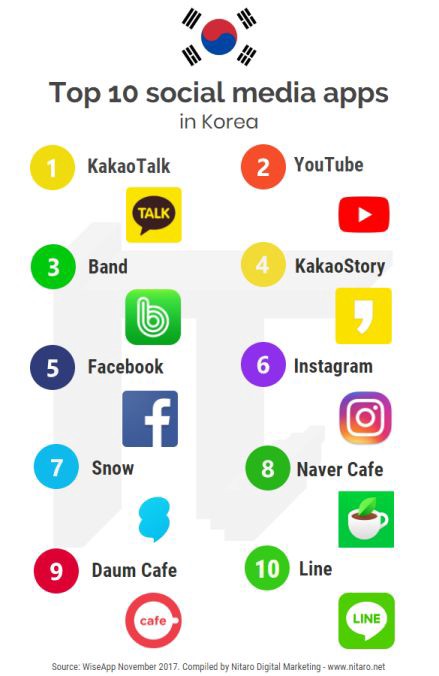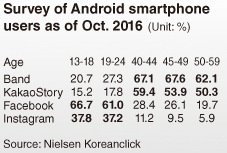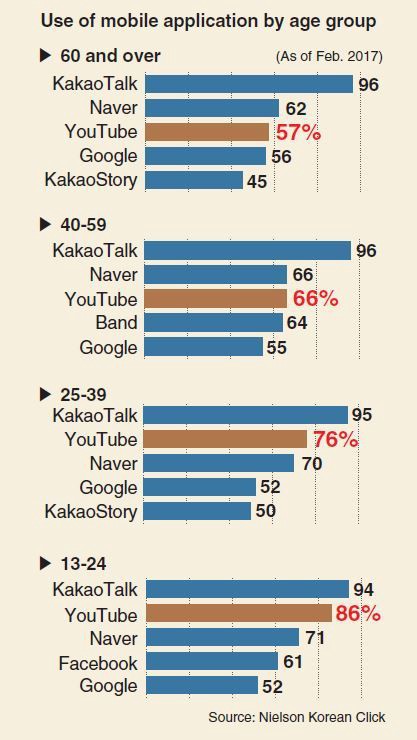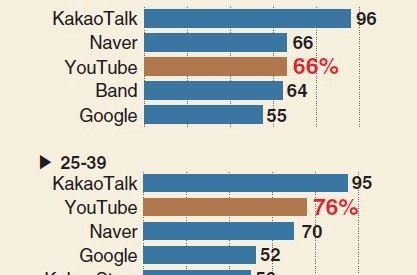What are the most used social networks in Korea? That is a difficult questions to answer, it depends on many things! Do you count page views, time spent, on mobile app or desktop? Several different sources say different things, but the most popular social media apps in Korea, according to data from WiseApp (Android users) are:

- KakaoTalk ? Even Obama uses Kakao
- YouTube ? Who doesn?t watch videos here?
- Band ? of brothers and sisters
- KakaoStory ? Old, unfashionable people post here
- Facebook ? Like me or I ? you
- Instagram ? For (wannabe) hipsters
- Snow ? Korea?s Snapchat
- Naver Cafe ? Korea?s biggest caf
- Daum Cafe ? When the biggest caf is full
- Line ? There is a ?line? at the friends store
Android has roughly 71% market share vs. 28% iOS.
There is a Korean ?One Store? run by telecom companies and Naver that competes with Google Play and App Store, however. It has a 39% market share. Facebook is also experimenting with food ordering, and is helping startups in Korea to go global. Six million Koreans use Instagram. As for demographics, younger people (people in their 10s and 20s) prefer Facebook, YouTube and Twitter, older people (40s and 50s) use KakaoStory and Band. According to another study, YouTube is the most popular with teens.


What about the importance of smartphones and tablets? The majority of traffic now comes from mobile, in categories like restaurants (and with younger people) it can be higher than 57%. In Korea, ?84 percent use SNS through their mobile devices while only 1.5 percent used personal computers.? What is the significance of all this? More and more advertising budget is spent on mobile and online. The Korean advertising market grew 15% in 2016 and 32% (1.75 trillion won) was spent on digital. Of digital, 49% went to mobile. This meant a growth of 36% compared to the year before (the largest growth among sectors). Interesting detail is that streaming ads grew the most. Koreans do not like to pay for online news, magazines and books (including webtoons). The biggest agencies are Cheil, Innocean and HS Ad. Respectively, they are associated with Samsung, Hyundai and LG ? surprise!
There is also criticism of online commercials. It is not clear on which websites (display, banner) ads appear. Also, some people wonder whether programmatic (automatic) ads are effective. Then, there are new developments like the Brave browser blockchain which has its own cryptocurrency: ?it prevents sites from tracking a user and blocks ads, while also bypassing the anti-ad-blocker protection used by major news sites.? (Google AdWords and Facebook ads still show.)
Originally published at www.nitaro.net on December 21, 2017.


